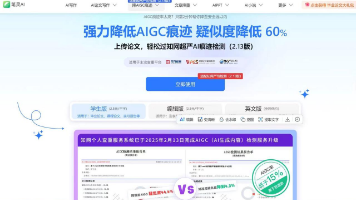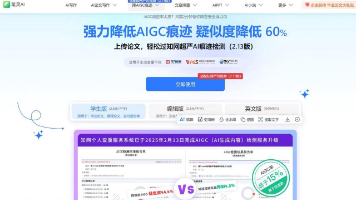【spring security】为什么要使用userdetailservice
/ 将业务角色转换为Spring Security权限${rolename"))// 返回加密后的密码// 返回邮箱作为用户名// 只有SUSPENDED状态才算锁定// 只有ACTIVE状态才启用// 其他方法返回true(根据业务需求调整)组件作用必要性从数据源加载用户信息✅ 必需封装用户认证信息✅ 必需密码加密验证✅ 必需认证管理✅ 自动配置关键要点UserDetailsService是Sp
·
Spring Security + UserDetailsService 深度解析:从401到认证成功的完整实现
📋 目录
🎯 问题背景
在开发B2B采购平台时,我们遇到了一个典型的认证问题:
# Postman中的Basic Auth请求返回401 Unauthorized
curl -u 'user@example.com:password' http://localhost:8080/api/v1/users/my-invitation-code
# 返回:401 Unauthorized
问题根源:Spring Security配置了Basic Auth,但没有配置UserDetailsService来验证数据库中的用户。
🏗️ Spring Security认证架构
认证流程图
核心组件关系
// 1. Spring Security配置
@Configuration
@EnableWebSecurity
class SecurityConfig(
private val userDetailsService: UserDetailsService // 注入我们的实现
) {
@Bean
fun filterChain(http: HttpSecurity): SecurityFilterChain {
return http
.authorizeHttpRequests { auth ->
auth.requestMatchers("/api/v1/users/register").permitAll()
.anyRequest().authenticated()
}
.httpBasic { } // 启用Basic Auth
.build()
}
}
// 2. UserDetailsService实现
@Service
class CustomUserDetailsService(
private val userIdentityRepository: UserIdentityRepository
) : UserDetailsService {
override fun loadUserByUsername(username: String): UserDetails {
// 从数据库查询用户
val email = Email.of(username)
val userIdentity = userIdentityRepository.findByEmail(email)
?: throw UsernameNotFoundException("用户不存在: $username")
// 转换为Spring Security需要的格式
return CustomUserDetails(userIdentity)
}
}
🔍 UserDetailsService的作用
为什么需要UserDetailsService?
- 数据源桥梁:连接Spring Security与我们的用户数据
- 认证信息提供:提供用户名、密码、权限等认证信息
- 用户状态检查:检查账户是否启用、锁定、过期等
UserDetails接口详解
interface UserDetails {
fun getAuthorities(): Collection<GrantedAuthority> // 用户权限
fun getPassword(): String // 加密后的密码
fun getUsername(): String // 用户名(通常是邮箱)
fun isAccountNonExpired(): Boolean // 账户是否未过期
fun isAccountNonLocked(): Boolean // 账户是否未锁定
fun isCredentialsNonExpired(): Boolean // 凭证是否未过期
fun isEnabled(): Boolean // 账户是否启用
}
自定义UserDetails实现
class CustomUserDetails(
private val userIdentity: UserIdentity
) : UserDetails {
override fun getAuthorities(): Collection<GrantedAuthority> {
// 将业务角色转换为Spring Security权限
return listOf(SimpleGrantedAuthority("ROLE_${userIdentity.role.name}"))
}
override fun getPassword(): String {
// 返回加密后的密码
return userIdentity.password.hashedValue
}
override fun getUsername(): String {
// 返回邮箱作为用户名
return userIdentity.email.value
}
override fun isAccountNonLocked(): Boolean {
// 只有SUSPENDED状态才算锁定
return userIdentity.status.name != "SUSPENDED"
}
override fun isEnabled(): Boolean {
// 只有ACTIVE状态才启用
return userIdentity.canLogin()
}
// 其他方法返回true(根据业务需求调整)
override fun isAccountNonExpired(): Boolean = true
override fun isCredentialsNonExpired(): Boolean = true
}
🛠️ 完整实现过程
步骤1:创建UserDetailsService实现
package com.purchase.shared.infrastructure.security
@Service
class CustomUserDetailsService(
private val userIdentityRepository: UserIdentityRepository
) : UserDetailsService {
override fun loadUserByUsername(username: String): UserDetails {
// 1. 验证邮箱格式
val email = try {
Email.of(username)
} catch (e: IllegalArgumentException) {
throw UsernameNotFoundException("邮箱格式不正确: $username")
}
// 2. 查询用户
val userIdentity = userIdentityRepository.findByEmail(email)
?: throw UsernameNotFoundException("用户不存在: $username")
// 3. 检查用户状态
if (!userIdentity.canLogin()) {
throw UsernameNotFoundException("用户状态不允许登录: ${userIdentity.status}")
}
// 4. 返回UserDetails
return CustomUserDetails(userIdentity)
}
}
步骤2:配置SecurityConfig
@Configuration
@EnableWebSecurity
class SecurityConfig(
private val customUserDetailsService: UserDetailsService
) {
@Bean
fun filterChain(http: HttpSecurity): SecurityFilterChain {
return http
.csrf { csrf -> csrf.disable() } // 禁用CSRF(API项目)
.cors { cors -> cors.configurationSource(corsConfigurationSource()) }
.authorizeHttpRequests { auth ->
auth.requestMatchers("/api/v1/users/register", "/api/v1/invitation-codes/*/validate")
.permitAll()
.anyRequest().authenticated()
}
.httpBasic { } // Spring Security会自动使用注入的UserDetailsService
.sessionManagement { session ->
session.sessionCreationPolicy(SessionCreationPolicy.IF_REQUIRED)
.maximumSessions(1)
.sessionRegistry(sessionRegistry())
}
.build()
}
@Bean
fun passwordEncoder(): PasswordEncoder = BCryptPasswordEncoder()
@Bean
fun sessionRegistry(): SessionRegistry = SessionRegistryImpl()
}
步骤3:测试认证流程
# 1. 注册用户
curl -X POST http://localhost:8080/api/v1/users/register \
-H "Content-Type: application/json" \
-d '{
"userName": "test_user",
"email": "test@example.com",
"password": "Password123!",
"role": "BUYER"
}'
# 2. 使用Basic Auth访问受保护的API
curl -u 'test@example.com:Password123!' \
http://localhost:8080/api/v1/users/my-invitation-code
🐛 常见问题与解决方案
问题1:401 Unauthorized
症状:Basic Auth请求返回401
原因:没有配置UserDetailsService
解决:实现UserDetailsService接口
问题2:用户名格式问题
症状:UsernameNotFoundException
原因:邮箱格式验证失败
解决:在loadUserByUsername中添加格式验证
val email = try {
Email.of(username)
} catch (e: IllegalArgumentException) {
throw UsernameNotFoundException("邮箱格式不正确: $username")
}
问题3:密码验证失败
症状:认证失败,但用户存在
原因:密码编码不匹配
解决:确保使用相同的PasswordEncoder
// 注册时
val hashedPassword = passwordEncoder.encode(plainPassword)
// 认证时(UserDetails返回)
override fun getPassword() = userIdentity.password.hashedValue
问题4:权限问题
症状:认证成功但访问被拒绝
原因:权限配置不正确
解决:正确配置角色权限
override fun getAuthorities(): Collection<GrantedAuthority> {
// Spring Security约定:角色以ROLE_开头
return listOf(SimpleGrantedAuthority("ROLE_${userIdentity.role.name}"))
}
🎯 最佳实践
1. 安全性考虑
// ✅ 好的做法
override fun loadUserByUsername(username: String): UserDetails {
// 1. 输入验证
if (username.isBlank()) {
throw UsernameNotFoundException("用户名不能为空")
}
// 2. 状态检查
if (!userIdentity.canLogin()) {
throw UsernameNotFoundException("账户状态异常")
}
// 3. 不暴露敏感信息
throw UsernameNotFoundException("用户名或密码错误") // 统一错误信息
}
// ❌ 避免的做法
throw UsernameNotFoundException("用户 ${username} 不存在") // 暴露用户是否存在
2. 性能优化
// ✅ 使用缓存
@Cacheable("userDetails")
override fun loadUserByUsername(username: String): UserDetails {
// 查询逻辑
}
// ✅ 只查询必要字段
fun findByEmailForAuth(email: Email): UserIdentity? {
// 只查询认证需要的字段,不查询完整聚合根
}
3. 日志记录
override fun loadUserByUsername(username: String): UserDetails {
logger.debug("尝试加载用户: {}", username)
val userIdentity = userIdentityRepository.findByEmail(email)
if (userIdentity == null) {
logger.warn("用户不存在: {}", username)
throw UsernameNotFoundException("用户名或密码错误")
}
logger.debug("用户加载成功: {}", username)
return CustomUserDetails(userIdentity)
}
📊 总结
UserDetailsService是Spring Security认证体系的核心组件:
| 组件 | 作用 | 必要性 |
|---|---|---|
| UserDetailsService | 从数据源加载用户信息 | ✅ 必需 |
| UserDetails | 封装用户认证信息 | ✅ 必需 |
| PasswordEncoder | 密码加密验证 | ✅ 必需 |
| AuthenticationManager | 认证管理 | ✅ 自动配置 |
关键要点:
- UserDetailsService是Spring Security与业务数据的桥梁
- 正确实现UserDetails接口是认证成功的关键
- 安全性、性能、可维护性都需要考虑
- 遵循Spring Security的设计模式和最佳实践
通过正确实现UserDetailsService,我们成功解决了401认证问题,为后续的授权和会话管理奠定了基础。
作者: William
日期: 2025-08-20
项目: 用户身份管理系统
更多推荐
 已为社区贡献6条内容
已为社区贡献6条内容








所有评论(0)